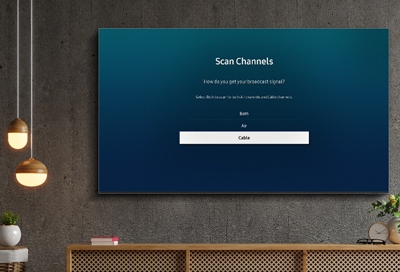Apollo Group Tv for Beginners
The 5-Minute Rule for Apollo Group Tv
Table of ContentsAbout Apollo Group TvRumored Buzz on Apollo Group TvThe 30-Second Trick For Apollo Group TvAn Unbiased View of Apollo Group Tv
In this situation, as opposed to having three-minute business places during a 30-minute television program, TV shows might change to one where a consumer will certainly be called for to have a regular monthly subscription, to ensure that they cen view targeted banner advertisements. This sort of advertising and marketing currently happens on the net, and the amount of data television firms accumulate permits them to do similar.Describe the significant patterns among the broadcasting and wire networks. Popular radio reveals such as authorities drama Dragnet and western cowboy series Gunsmoke were adapted for television, and brand-new TV programs were funded by single advertisers, simply as radio shows had actually been.
Today, the tv industry is even more complicated. Programs are sponsored by numerous advertisers; programming is regulated by major media corporations; and the 3 significant networks no more dominate the airwaves but instead share their customers with various cable networks. A number of elements account for these fads within the industry, consisting of technological advancements, federal government guidelines, and the creation of new networks.

What Does Apollo Group Tv Mean?
Also public television has actually ended up being based on the influence of advertising. Developed in 1969, (PBS) developed out of a record by the Carnegie Commission on Educational Television, which checked out the role of educational, noncommercial television on society. The report suggested that the government financing public television in order to give diversity of programs throughout the network eraa service produced "not to sell items" but to "boost citizenship and civil service (McCauley, 2003)." Public television was additionally meant to give universal access to tv for audiences in country locations or viewers that could not manage to pay for personal tv services.
The period between 1950 and 1970 is traditionally identified as the. Apart from a little section of airtime managed by public television, the three major networks (understood as the Big Three) dominated the television market, jointly accounting for more than 95 percent of prime-time watching. In 1986, Rupert Murdoch, the head of international firm Information Corp, launched the Fox network, challenging the supremacy of the Big 3.
Targeting young and minority target markets with programs such as Buffy the Vampire Killer, Moesha, Dawson's Creek, and The Wayans Bros., the new networks wanted to draw stations away from their old network affiliations. Instead than duplicating the success of Fox, UPN and WB struggled to make an impact. Unable to draw in many associate terminals, both recently established networks got to fewer homes than their larger rivals since they were inaccessible in some smaller sized cities.
This choice led the method for the growth of wire flick networks, adding to the rapid growth of wire in the 1980s and 1990s. apollo group tv app. Further deregulation of cable in the 1984 Cord Communications Policy Act removed limitations on cable prices, allowing operators to charge what they desired for cable television services as long as there worked competition to the service (a standard that over 90 percent of all cable markets can satisfy)
The smart Trick of Apollo Group Tv That Nobody is Talking About

Having actually developed the initial "superstation," Turner expanded his world by establishing 24-hour information network CNN in 1980. At the end of the year, 28 nationwide shows solutions were offered, and the cable revolution had begun. Over the next decade, the market went through a period of fast growth and appeal, and by 1994 audiences might select from 94 standard and 20 premium cord solutions.
Number 9 - https://myanimelist.net/profile/apollogtv01.16 Boosted competition from cord networks has triggered a steady decline in the networks' target market rankings. During the 1950s, the expense of creating a solitary tv show enhanced as programs became much longer and manufacturing prices soared. Sponsorship on network television changed from single sponsorship, in which a program was completely sustained and generated by one marketer, to multiple sponsorship, in which marketers bought 1- or 2-minute places on the show
Select one of the Big Four next page networks and print out its weekly programming schedule. Enjoy the network's prime-time programs over the training course of a week, keeping in mind the target group for each program.
The Best Strategy To Use For Apollo Group Tv

Linear television, typically referred to as typical program television, encompasses cord and satellite television. It's called "direct" since content adheres to a fixed shows routine, unlike on-demand material which the individual visitor decides to enjoy based on their very own preferences and schedule. So, when you ask, "What is direct television?", think about it as the timeless method of enjoying television that has been around for years.